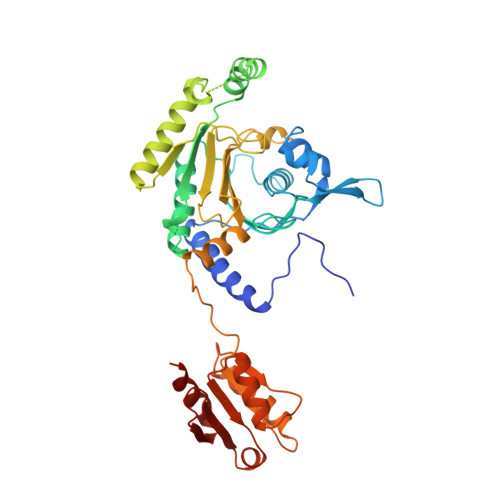The first step of aminoacylation at the atomic level in histidyl-tRNA synthetase.
Arnez, J.G., Augustine, J.G., Moras, D., Francklyn, C.S.(1997) Proc Natl Acad Sci U S A 94: 7144-7149
- PubMed: 9207058
- DOI: https://doi.org/10.1073/pnas.94.14.7144
- Primary Citation of Related Structures:
1KMM, 1KMN - PubMed Abstract:
The crystal structure of an enzyme-substrate complex with histidyl-tRNA synthetase from Escherichia coli, ATP, and the amino acid analog histidinol is described and compared with the previously obtained enzyme-product complex with histidyl-adenylate. An active site arginine, Arg-259, unique to all histidyl-tRNA synthetases, plays the role of the catalytic magnesium ion seen in seryl-tRNA synthetase. When Arg-259 is substituted with histidine, the apparent second order rate constant (kcat/Km) for the pyrophosphate exchange reaction and the aminoacylation reaction decreases 1,000-fold and 500-fold, respectively. Crystals soaked with MnCl2 reveal the existence of two metal binding sites between beta- and gamma-phosphates; these sites appear to stabilize the conformation of the pyrophosphate. The use of both conserved metal ions and arginine in phosphoryl transfer provides evidence of significant early functional divergence of class II aminoacyl-tRNA synthetases.
- Institut de Génétique et de Biologie Moléculaire et Cellulaire, Centre National de la Recherche Scientifique/Institut National de la Santé et de la Recherche Médicale/Université Louis Pasteur, BP 163, 67404 Strasbourg-Illkirch, Cedex, France.
Organizational Affiliation:

















